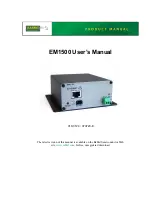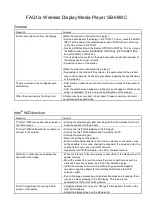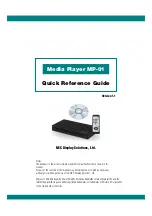
PAGE 5
PROCESS SWITCH
The process switch selects whether the signal processor is attached to the D/A convertor,
A/D convertor, is configured for digital in - digital out, or analog in - analog out. An analog gener-
ated dither source is available to the A/D convertor and to the digital in - digital out modes. The
dither is enabled by selecting the process in the 16 or 20 bit groupings
THE PROCESS
The harmonic process runs 24 bit internal. The digital inputs and outputs are also 24 bit. If you
feed 24 bit digital in you will get 24 bit digital out. If you are recording 16 bit digital, it is
Recommended that you listen to your 16 bit data and adjust the process so it sounds good. Keep
in mind that HEDD generates harmonically related information. It was arrived at by analyzing
harmonic distortion in prized equipment and a lot of listening. If you feed 16 bit audio into the
HEDD-192, it will generate 24 bit data because of its internal 24 bit calculations. This extra
resolution is harmonically related information. If you use only 16 bits of the output it is not a
problem. We recommend that if you are recording to 16 bits, monitor the process from the 16 bit
output of your system to get optimum results in adjusting HEDD.
When using the process you will affect your average signal level if you turn the process up far
enough. When adding harmonic content, the audio is going to get louder if it is modified to a great
enough level. With the HEDD process, the peaks in your signal are being reduced while the low-
level harmonic content is being increased. What this means is that the HEDD process will not
cause any overs. In fact, what it will do, is reduce the level of existing overs. Think of it as a tube
or tape doing soft clipping, i.e. squashing the peaks and causing analog compression.
HOW MUCH PROCESS TO USE
There are no rules, but here are some general guidelines. Making it sound good is what its
all about. The process is level and program dependent. Settings that will work best for one
source may not work at all for another source. If you need a general purpose setting try running
the process knobs at 3.5 to 6. This should be safe. When you run the knobs in the 5 and up
range it is easy to go too far but it could be a cool thing. Because we are not used to a musical
device that changes harmonic content with a knob it will take a little ear learning. It is also good to
be aware that the ear loves a little harmonic generation. Turning HEDD off can take the life out of
your program material, even if you did not notice it turn on.
The amount of process can result in subtle changes or drastic changes depending on what the
program is like and how much process is being added. In other words the difference between
analog and digital recordings can be subtle or drastic. It will be easier to hear in material that is
more open as opposed to material that is very dense. The amount of low frequency information
will also affect how we hear the process.
DITHERING
The dither process is proprietary to Crane Song. It is an analog generated source that has been
filtered to a spectrum where the ear is least sensitive. We believe that this process sounds better
than other systems and is less likely to cause noise problems as compared to other dither
sources. The dither is added to the audio source as apposed to a digital process. This is the best
way to dither an A/D convertor. It happens in the conversion.
Summary of Contents for HEDD-192
Page 2: ......
Page 9: ...PROCESS BLOCK DIAGRAMS PAGE 7 ...
Page 10: ...PROCESS BLOCK DIAGRAMS CONT PAGE 8 ...
Page 12: ......































